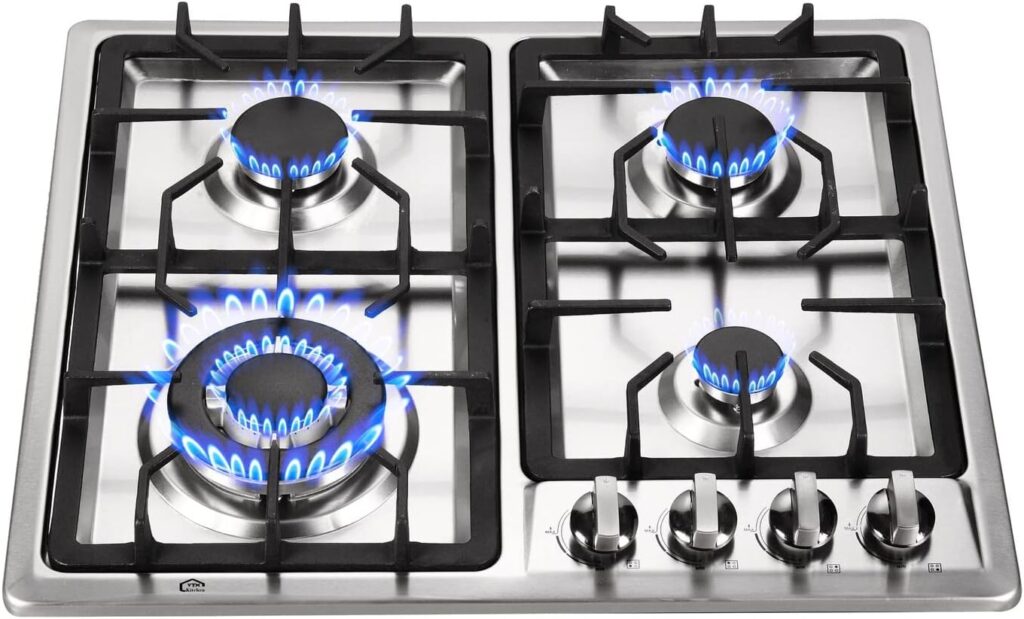Gas stoves are the heart of many kitchens, offering efficient and precise cooking. However, like any appliance, they can encounter issues over time, from minor glitches to more significant malfunctions. Gas stove repair might seem daunting, but with the right knowledge and guidance, you can troubleshoot and fix many problems yourself. In this article, we’ll delve into common gas stove issues and explore step-by-step repair procedures to keep your kitchen cooking smoothly.
Understanding Your Gas Stove: Before diving into repairs, it’s crucial to understand the basic components of your gas stove. Typically, a gas stove comprises burners, igniters, gas valves, control knobs, and safety features like thermocouples or flame sensors. Familiarize yourself with these elements to better diagnose and resolve any issues.
Common Gas Stove Issues and Solutions:
Burner Ignition Problems:
- Issue: One or more burners fail to ignite when turning the knob.
- Solution: Clean the burner ports with a wire brush to remove debris blocking the gas flow. Additionally, check the igniter for any damage or misalignment. If necessary, replace the faulty igniter to restore proper ignition.
Uneven Flame or Yellow Flames:
- Issue: Burner flames are uneven or have a yellow hue, indicating incomplete combustion.
- Solution: Clean the burner assembly thoroughly, including the burner caps, heads, and ports, to ensure proper gas flow and combustion. Adjust the air shutter on each burner to achieve a blue, steady flame, indicating efficient burning.
Gas Odor or Leakage:
- Issue: You detect the smell of gas or suspect a gas leak around the stove.
- Solution: Immediately turn off the gas supply and ventilate the area. Check for visible signs of leakage, such as hissing sounds or damaged gas lines. If you suspect a leak, contact a professional gas technician for immediate assistance to repair or replace faulty components.
Control Knob Malfunction:
- Issue: Control knobs are loose, stiff, or unresponsive.
- Solution: Inspect the control knobs for any debris or obstruction hindering smooth operation. Tighten loose knobs and lubricate stiff ones with silicone spray or graphite lubricant. If knobs remain unresponsive, check the gas valve behind the control panel for any damage and replace if necessary.
Oven Temperature Inaccuracy:
- Issue: Oven temperature does not match the set temperature or fluctuates significantly during cooking.
- Solution: Calibrate the oven temperature by adjusting the temperature sensor or thermostat settings. Use an oven thermometer to monitor temperature accuracy and make necessary adjustments. If calibration does not resolve the issue, the temperature sensor or thermostat may require replacement.
Pilot Light Outage:
- Issue: The pilot light goes out frequently, preventing proper burner ignition.
- Solution: Clean the pilot assembly and ensure it receives a steady flow of gas. Adjust the pilot flame to a consistent blue flame, indicating proper combustion. If the pilot light continues to extinguish, check for drafts or improper ventilation around the stove and address any issues accordingly.
Safety Precautions: When performing gas stove repairs, prioritize safety to prevent accidents or further damage. Always:
- Turn off the gas supply before starting any repair work.
- Ventilate the area to prevent gas buildup.
- Wear protective gear, including gloves and safety goggles.
- Follow manufacturer’s instructions and guidelines for repair procedures.
- If unsure or uncomfortable with repairs, seek assistance from a qualified technician.
Conclusion: Mastering gas stove repair empowers you to tackle common issues efficiently and effectively, ensuring your kitchen remains functional and safe. By understanding the basics of gas stove operation and troubleshooting techniques, you can diagnose and resolve various problems with confidence. Remember to prioritize safety, and don’t hesitate to seek professional assistance for complex repairs. With the right knowledge and approach, you can keep your gas stove running smoothly for years to come.



